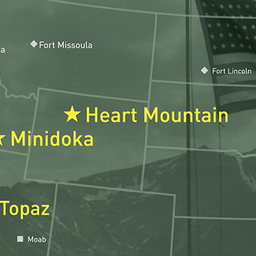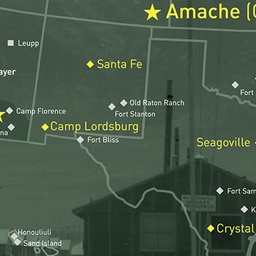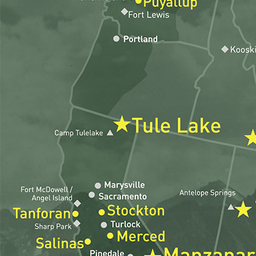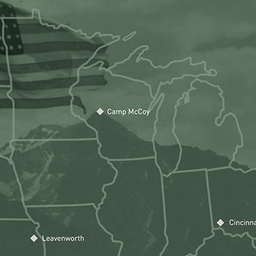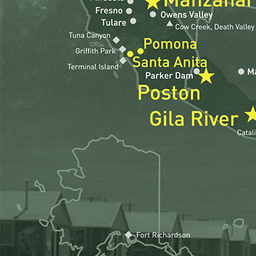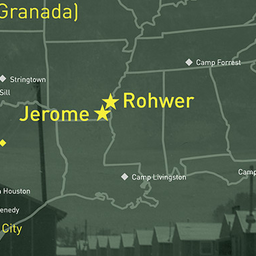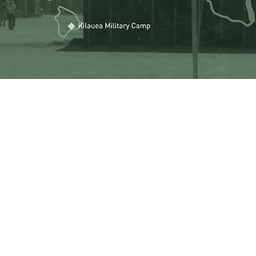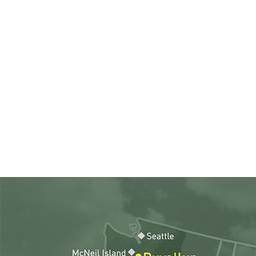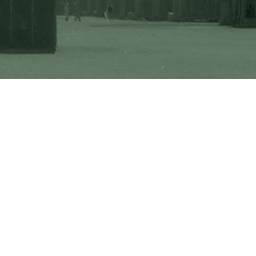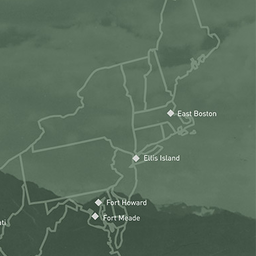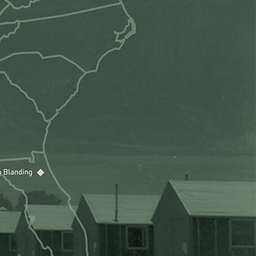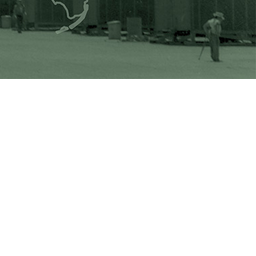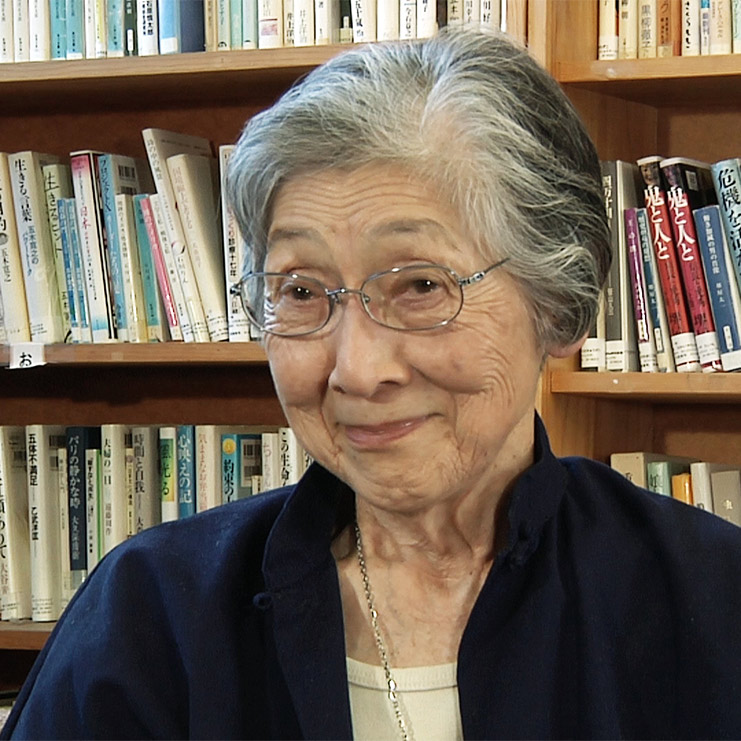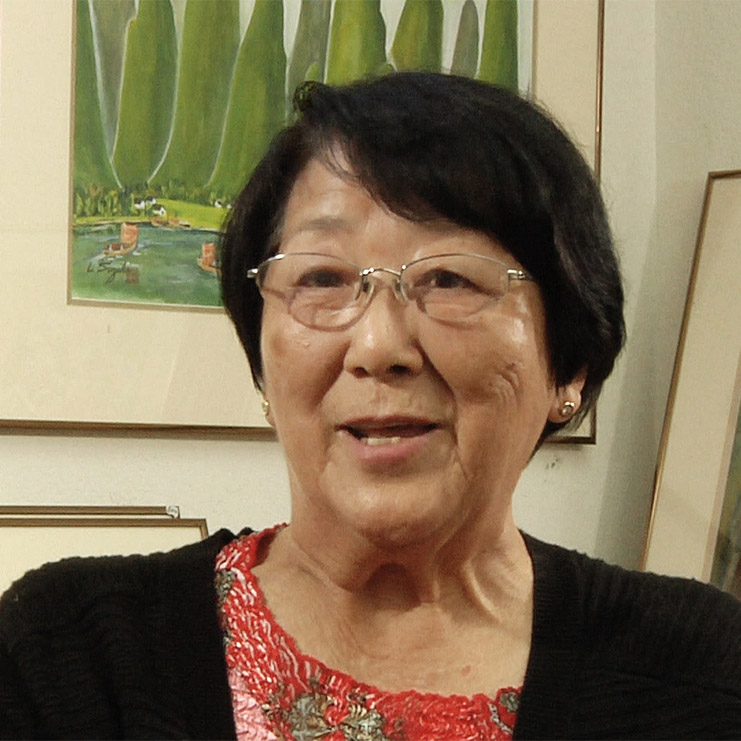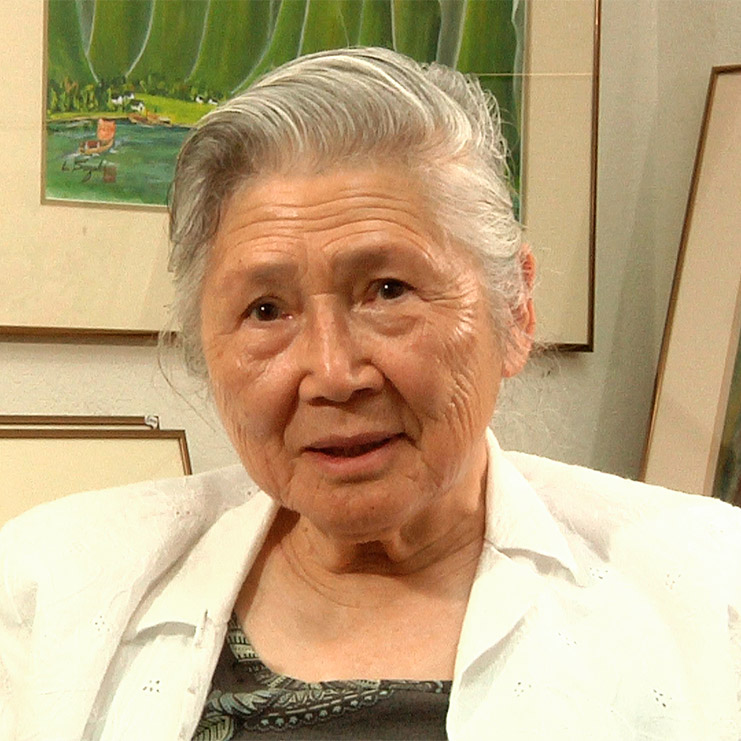During World War II, the United States government removed approximately 117,000 Japanese and Japanese Americans from the West Coast of the United States, Alaska and parts of Arizona, under the authorization of President Franklin D. Roosevelt’s Presidential Executive Order 9066 (E.O. 9066) on February 19, 1942. The United States government first imprisoned Japanese and Japanese Americans living on the West Coast, in Alaska and in parts of Arizona in “Assembly” Centers. By October of 1942, the U.S. government had moved 110,000 people to ten semi-permanent new cities that the government named War Relocation Authority (WRA) “relocation centers,” as shown in red on the map below. The WRA Centers represent ten of the sites that collectively are known as Japanese American confinement sites.
To browse by location on the map, click on a yellow icon.
This site provides a repository of information and images related to the War Relocation (WRA) Camps, Temporary “Assembly Centers,” Department of Justice Internment Camps, and U.S. Army Facilities with four types of images: 1) Architectural drawings, 2) Objects, 3) Engineering plans or maps made or related to the WRA Camps, and 4) Documents, periodicals and photographs.
Images on this site are provided as a research resource of primary graphic documentation of the built environments of the Japanese American Confinement Sites for students, teachers, researchers, and the general public.
For a full list of WRA Camps, Temporary “Assembly Centers,” Department of Justice Internment Camps, and U.S. Army Facilities, please visit the History page.
For a list of objects from undetermined camps, click here.
Please send inquiry requests to njahs@njahs.org.
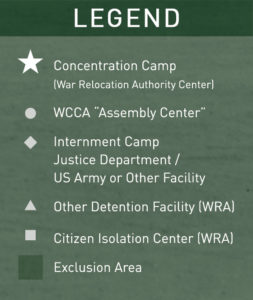
Oral Histories

Browse the digital collection at the University of San Francisco Library.
![]()
This project is sponsored by the National Japanese American Historical Society.

